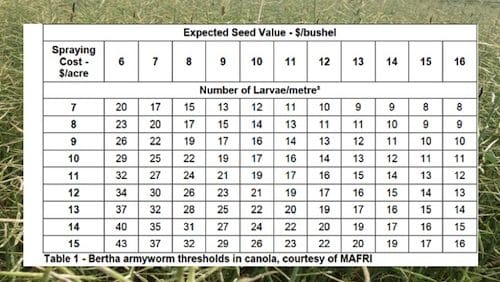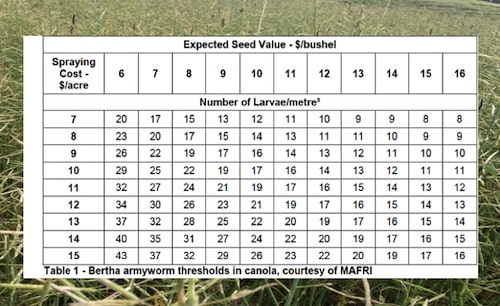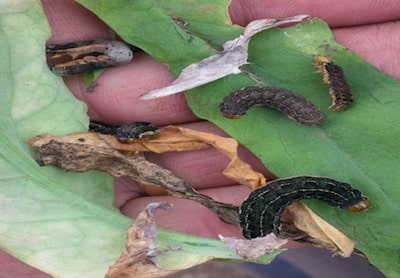Canola Watch Live! had two key agronomy messages with regard to bertha armyworm management in 2014:
1. Lower canola prices will mean higher thresholds for bertha armyworm. See this relationship in the table above.
2. Bertha armyworm populations tend to build for three years, then drop due to disease or beneficial insects. Areas that have had three years of building infestations may see the bertha armyworm threat reduced in 2014. Other areas are still building toward the peak. Your local risk is difficult to predict until adult counts start in the summer.
We also highlighted an important scouting tip: Bertha armyworm numbers above thresholds can work quickly to reduce yield. Carefully check at least five separate areas of the field. The more the better. If you just check one spot, you are more likely to get the wrong answer. And if your count is close to threshold, keep looking. As Alberta Ag entomologist Scott Meers says, “If the action level is 20 per square metre and you find 17, look more closely to make sure you’re right.”



